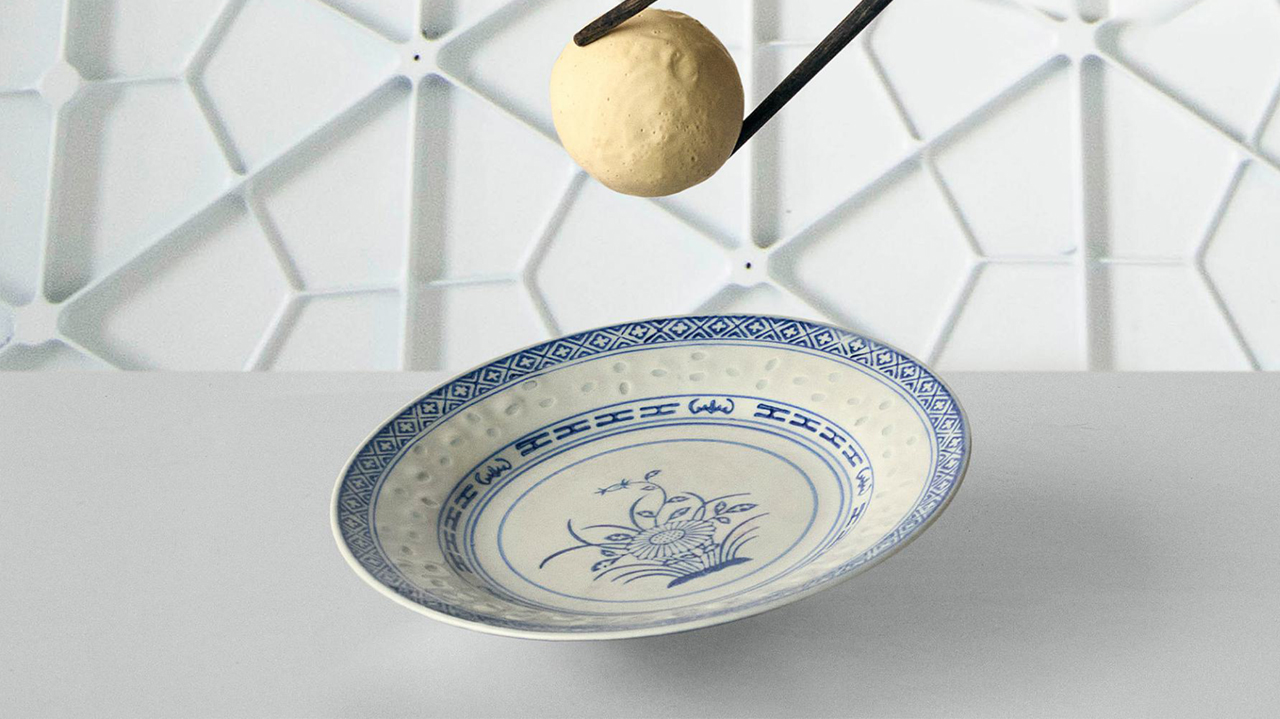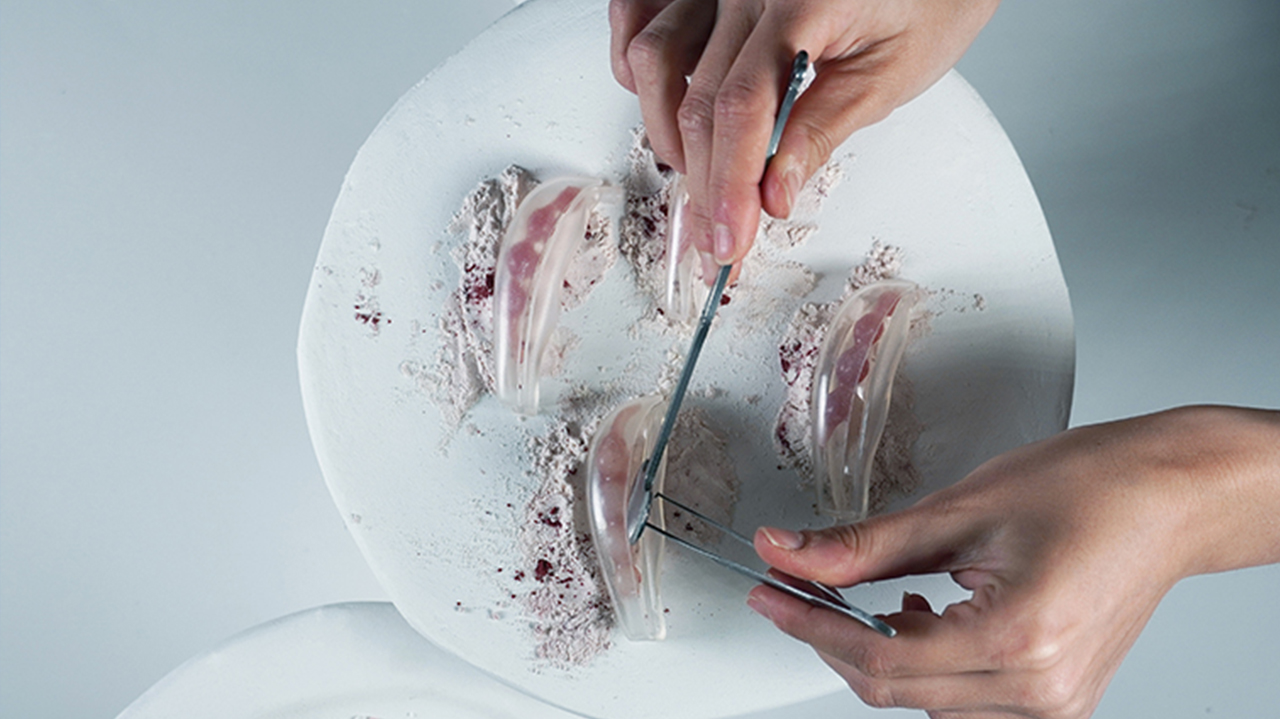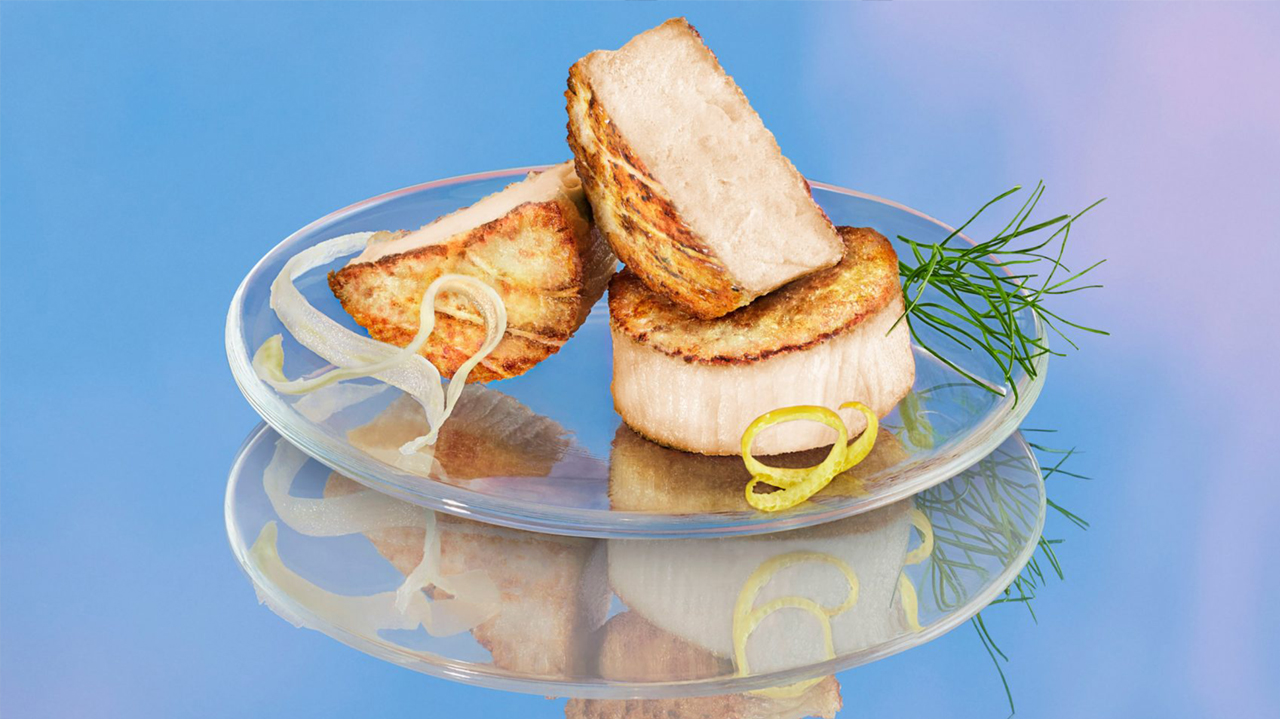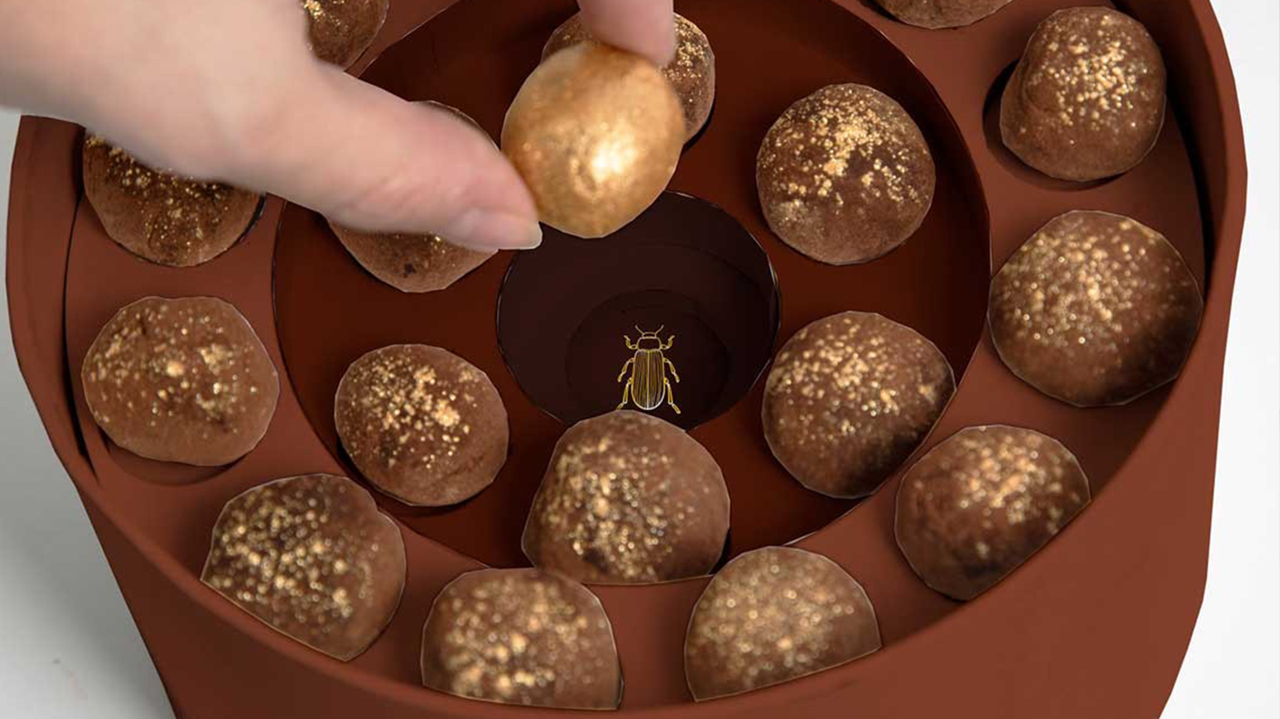As the year is coming to a close, many of us are preparing our homes and dinner tables for a festive meal. But what's on the plate in the future? We put together a four-course meal with different perspectives on food design. Pull up a chair and join our future festive feast!
Hors D’Oeuvre – Astrotofu
We start our future feast with a hors d’oeuvre coming from outer space. One step at at time, food futurists are exploring the possibilities of space farming. It is not a long stretch to think that soon we might feast on food grown outside of earth. London-based designer and researcher Yinglun Mao created his design fiction project Astrotofu, where he presents the narrative of soybeans as a perfect experimental crop in orbit. With his project the designer creates a connection between cosmic exploration and earthly memories through tofu making.

Appetizer – Seafood flavoured microalgae

Our next course brings us to a food tasting experience generated from microalgae. Some of our most popular flavors are currently threatened with extinction, due to loss of biodiversity by human consumerism. Textile designer Malu Luecking might have found the solution to this problem in the ocean. Microalgae can give us a taste of endangered flavors without further harming the ecosytem. Her speculative design project Landless Food explores microlagae that are capable of generating flavors that are similar to endangered ones we love, such as seafood. Landless Food urges protection of our ecosystem, but also expresses the cultural importance of culinary traditions.
Main course - Co2 steak
For the main course: a mouth-watering steak. Not made from animals, but Co2. California-based startup Air Meat envisions a future where meat will be derived through the fermentation of air, by using microbes. These microbes are capable of converting carbon dioxide into protein when combined with water and energy. After a process of purifiying and drying, the protein can be used for the creation of a multitude of meat subsitutes such as our beloved steak. This process of converting Co2 into protein is inspired by a previous research conducted by NASA in the 1960's: they experimented with converting carbon dioxide generated by astronauts into protein for consumption. Medium rare or well done, this Co2 meat will taste as good as the real deal.

Dessert - Insect Fudge

Room for dessert? Why not top off this dinner party with fudge made from insects? Insects are a sustainable source of protein and can be used in a wide variety of dishes. This can help us to feeding the world in 2050, as the consumption of bugs is becoming more accepted in western cultures. Design students Julie Bureau, Quentin Cadera and Anna Rigaud envision insects used in sweets such as their Insect fudge. They combined forces during a design project hosted by L'École de design Nantes Atlantique, the LEMNA marketing research lab, GRANEM marketing research lab and TU Delft. Who knows, maybe you will indulge on insects next Christmas.
